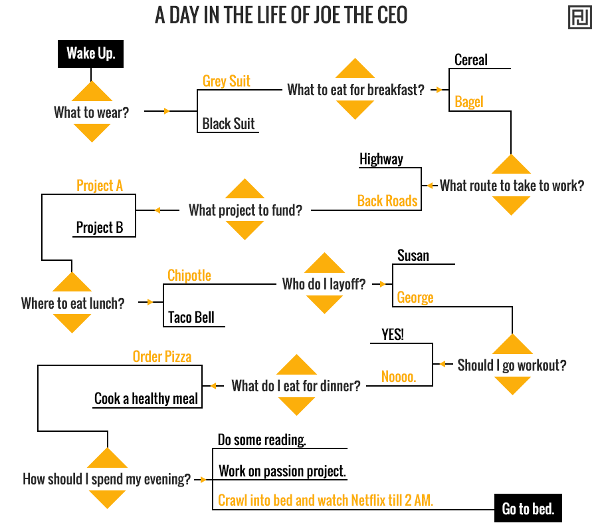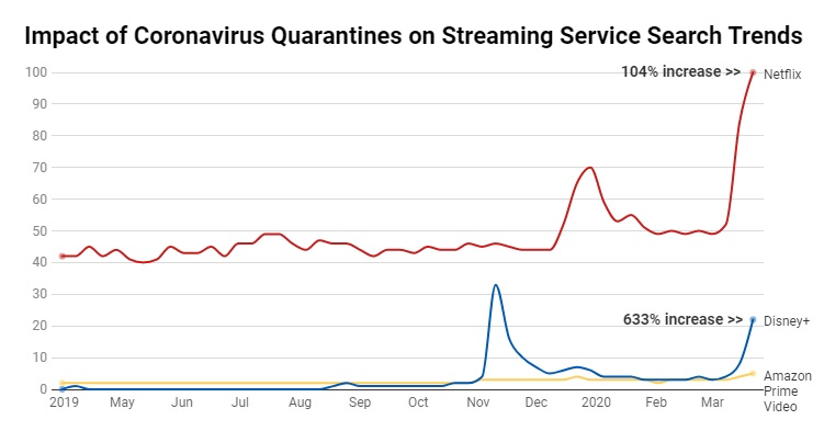Of all the models of streaming platform that were tried over the past decade, Netflix’s has undoubtedly proven the most popular. This has no doubt mainly been due to the casual enforcement of subscription policies (41% of Netflix users are predicted to be watching without paying [see Cook 2020]). As I argue here in relation to animation, however, I also believe that a major draw of the site can paradoxically be found in the limitation that it places on choice.
Netflix cycles its movies and TV shows. Many of the titles it hosts one month will have shifted by the next. Newer movies and series are added but, just as importantly, older ones are taken away. On a commercial level, this no doubt benefits Netflix in terms of their reproduction rights and the space taken up on their servers. However, it also produces unexpected benefits on a psychological level.

On average, there are just over five thousand titles available at any one time, and these are different in each region (see Cook 2020). Animation makes up only a small percentage of this, around 11% (see Lee 2019), and yet data suggests that at least 60% of viewers watch at least one (family-friendly) animated show per year (Hernandez 2018). When it comes to more specialized categories, like anime features or mature animation, the choice is even smaller and the changeover even more rapid.
The effect of this constantly shifting media is to impose scarcity and to limit choice. Although not as inflexible in its scheduling as the old appointment-to-view television model, being tempted by a movie on Netflix does demand a certain rapidity of response from the viewer. If you do not watch it now, you should at least watch it very soon, otherwise it will go. Netflix never advertises its changeover dates, so the threat of a show vanishing is always immanent.
Netflix restricts choice both synchronically, in terms of how many animated titles are available at any one time, and diachronically, by placing a (hidden) time-limit on how long this small selection will be available. Paradoxically, this limitation makes it easier to choose.
Much has been written in psychology on the effects of “decision fatigue”. The expression refers to the depletion of energy caused by accumulating choices. Each choice takes a mental toll, with the decision to pick one course of action over another leading to doubt and uncertainty. Over the course of the average modern-day, the many choices made – professional and domestic; what to read, browse, buy – cause considerable fatigue (Baumeister 2003). The intentional limitation of choice has, therefore, become a popular stress-reduction strategy.

By following a short-term commercial imperative and limiting the availability of their animated content, Netflix (perhaps accidentally) has made their service far more friendly to the casual viewer. Coming home from a long day of decision-making, Netflix replicates the accessibility of old terrestrial TV, where some choice is permitted but not infinite choice.

Compare this to Amazon Prime Video, where the “online rentals” model means choice can be extended near indefinitely. During the coronavirus lockdown, Netflix saw a 104% increase in usage. Disney+, which uses the Netflix model but with even fewer choices, skyrocketed by 633% (admittedly on much smaller viewing figures). Amazon Prime’s usage, by comparison, increased only 5% (see Cook 2020). For context, it rose 4.5% last Christmas as part of its normal holiday bump. In stressful times, viewers clearly value ease of choice. Netflix provides this, where Amazon Prime Video does not.
So what is the value of this information? Well, for one thing, it may cause us to reassess some of the conclusions reached by scholars of digital media. The phenomenon of “convergence”, wherein traditionally separate mediums have been amalgamated under the digital, has been described as initiating the breakdown of solid boundaries around what constitutes a solid media object, or “text”.
Alan Kirby (2009, 52) has described this as “onwardness”; no movie is ever watched without it leading to the next, series are forever being picked up and dropped, everything is in flux, nothing is ever properly started or finished but always in a process of continuation. The artist Kenneth Goldsmith took this further, celebrating the “flux” in his book Wasting Time on the Internet, as a twenty-first century equivalent of the Parisian flaneur. We are all flaneurs, he says, playfully browsing, watching, skimming along the surfaces of life, enjoying the feeling of time passing us by in a cavalcade of surface appearances. “The flaneur is hardwired into the internet,” he writes (Goldsmith 2016, 64).
But the Netflix model of animation consumption rejects this. The average viewer welcomes reduced (or, as Netlix would say, “tailored”) choice, and the peace of mind that it offers. The ability to search through a small range of animated titles and pick the one you want is gratifying. With so few choices, it is also likely that friends and co-workers have decided similarly, and so it is possible to share experiences and to make recommendations. Netflix, therefore, grants a sense of social participation not possible for the distant and ironic flaneur.
As I write, Netflix is hosting a whole range of Ghibli movies on its UK site. This has prompted huge numbers of people to rewatch the movies; something they likely would not have chosen to do without their choices being “tailored”. Ease, ultimately, provides greater benefits than the presumed ideal of infinite choice.
References
Baumeister, Roy F. (2003), “The Psychology of Irrationality”, in Isabelle Brocas and Juan D Carrillo (eds). The Psychology of Economic Decisions, Oxford: Oxford University Press.
Cook, Sam (2020), “50+ Netflix Statistics and Facts that Define the Company’s Dominance”, Comparitech, 11th April 2020. Web. https://www.comparitech.com/blog/vpn-privacy/netflix-statistics-facts-figures/.
Goldsmith, Kenneth (2016), Wasting Time on the Internet, New York: Harper Perennial.
Hernandez, Patricia (2018), “Netflix is Developing Animated Shows from the Creators of Moana, Inside Out and Finding Dory”, The Verge, 6th November. Web. https://www.theverge.com/2018/11/6/18068736/netflix-animated-childrens-shows-disney-moana-finding-dory.
Kirby, Alan (2009), Digimodernism, London: Continuum.
Lee, Wendy (2018), “Netflix and Amazon spark Animation Revival, Spending Heavily in Quest for Binge-worthy Shows”, Los Angeles Times, 27th November.
Joseph Darlington is Programme Leader for BA(Hons) Digital Animation with Illustration at Futureworks Media School, Manchester, UK. He is convenor of the Technology and Tradition conference (coming June 2021), author of British Terrorist Novels of the 1970 (Palgrave, 2018), and co-editor of the Manchester Review of Books. He is on Twitter at @Joe_Darlo.

Just what I was looking for, appreciate it for posting.
Love all that you shared.Thanks for the information. I like to share some information with you. I am Working in Aespaes media production services. Our production house is appreciated by president of the India with a national film award, Content Streaming association with Netflix barging into the world of 3D hologram, virtual reality and augmented media. Aespaes lab pvt ltd is leading into audio visual production house offering the live action, Animation, Virtual reality and Augmented reality support. I like if you connect with us for interesting animated journey. https://aespaes.com/
Monica”
Appreciate your blog and want to mention the reason behind the popularity of animation on netflix. Netflix has led the push into kids fare, adding 21 original animated series to its platform from January to October, with its catalog totaling 72 shows, according to data science firm Parrot Analytics. Streaming programs can be viewed anytime and on any device, making it especially appealing to parents with young children. Some animators have large fan bases on social media, providing them with ready-made audiences. Infact Netflix has grown so magnificently that it has covered almost every industry of animation.
http://aespaes.com ( Our Company and Netflix is our trusted Client)